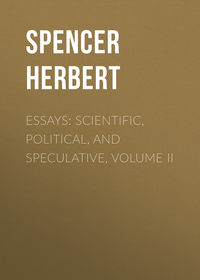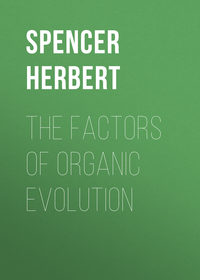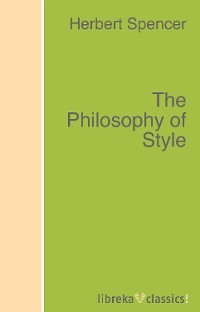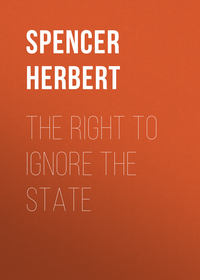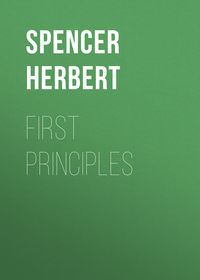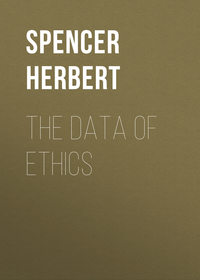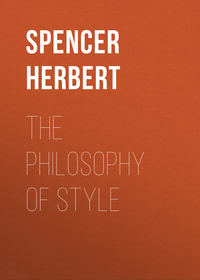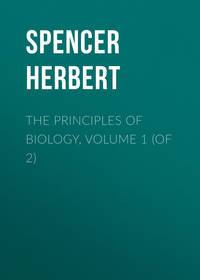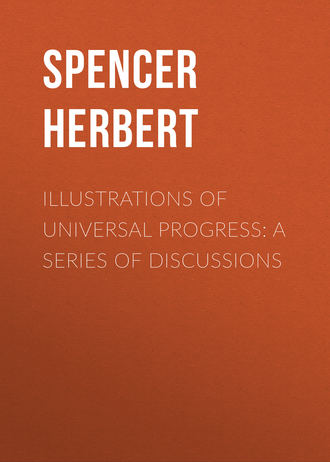 полная версия
полная версияIllustrations of Universal Progress: A Series of Discussions
While written language was passing through its earlier stages of development, the mural decoration which formed its root was being differentiated into Painting and Sculpture. The gods, kings, men, and animals represented, were originally marked by indented outlines and coloured. In most cases these outlines were of such depth, and the object they circumscribed so far rounded and marked out in its leading parts, as to form a species of work intermediate between intaglio and bas-relief. In other cases we see an advance upon this: the raised spaces between the figures being chiselled off, and the figures themselves appropriately tinted, a painted bas-relief was produced. The restored Assyrian architecture at Sydenham exhibits this style of art carried to greater perfection – the persons and things represented, though still barbarously coloured, are carved out with more truth and in greater detail: and in the winged lions and bulls used for the angles of gateways, we may see a considerable advance towards a completely sculptured figure; which, nevertheless, is still coloured, and still forms part of the building. But while in Assyria the production of a statue proper seems to have been little, if at all, attempted, we may trace in Egyptian art the gradual separation of the sculptured figure from the wall. A walk through the collection in the British Museum will clearly show this; while it will at the same time afford an opportunity of observing the evident traces which the independent statues bear of their derivation from bas-relief: seeing that nearly all of them not only display that union of the limbs with the body which is the characteristic of bas-relief, but have the back of the statue united from head to foot with a block which stands in place of the original wall. Greece repeated the leading stages of this progress. As in Egypt and Assyria, these twin arts were at first united with each other and with their parent, Architecture, and were the aids of Religion and Government. On the friezes of Greek temples, we see coloured bas-reliefs representing sacrifices, battles, processions, games – all in some sort religious. On the pediments we see painted sculptures more or less united with the tympanum, and having for subjects the triumphs of gods or heroes. Even when we come to statues that are definitely separated from the buildings to which they pertain, we still find them coloured; and only in the later periods of Greek civilization does the differentiation of sculpture from painting appear to have become complete.
In Christian art we may clearly trace a parallel re-genesis. All early paintings and sculptures throughout Europe were religious in subject – represented Christs, crucifixions, virgins, holy families, apostles, saints. They formed integral parts of church architecture, and were among the means of exciting worship; as in Roman Catholic countries they still are. Moreover, the early sculptures of Christ on the cross, of virgins, of saints, were coloured: and it needs but to call to mind the painted madonnas and crucifixes still abundant in continental churches and highways, to perceive the significant fact that painting and sculpture continue in closest connection with each other where they continue in closest connection with their parent. Even when Christian sculpture was pretty clearly differentiated from painting, it was still religious and governmental in its subjects – was used for tombs in churches and statues of kings: while, at the same time, painting, where not purely ecclesiastical, was applied to the decoration of palaces, and besides representing royal personages, was almost wholly devoted to sacred legends. Only in quite recent times have painting and sculpture become entirely secular arts. Only within these few centuries has painting been divided into historical, landscape, marine, architectural, genre, animal, still-life, &c., and sculpture grown heterogeneous in respect of the variety of real and ideal subjects with which it occupies itself.
Strange as it seems then, we find it no less true, that all forms of written language, of painting, and of sculpture, have a common root in the politico-religious decorations of ancient temples and palaces. Little resemblance as they now have, the bust that stands on the console, the landscape that hangs against the wall, and the copy of the Times lying upon the table, are remotely akin; not only in nature, but by extraction. The brazen face of the knocker which the postman has just lifted, is related not only to the woodcuts of the Illustrated London News which he is delivering, but to the characters of the billet-doux which accompanies it. Between the painted window, the prayer-book on which its light falls, and the adjacent monument, there is consanguinity. The effigies on our coins, the signs over shops, the figures that fill every ledger, the coats of arms outside the carriage panel, and the placards inside the omnibus, are, in common with dolls, blue-books, paper-hangings, lineally descended from the rude sculpture-paintings in which the Egyptians represented the triumphs and worship of their god-kings. Perhaps no example can be given which more vividly illustrates the multiplicity and heterogeneity of the products that in course of time may arise by successive differentiations from a common stock.
Before passing to other classes of facts, it should be observed that the evolution of the homogeneous into the heterogeneous is displayed not only in the separation of Painting and Sculpture from Architecture and from each other, and in the greater variety of subjects they embody, but it is further shown in the structure of each work. A modern picture or statue is of far more heterogeneous nature than an ancient one. An Egyptian sculpture-fresco represents all its figures as on one plane – that is, at the same distance from the eye; and so is less heterogeneous than a painting that represents them as at various distances from the eye. It exhibits all objects as exposed to the same degree of light; and so is less heterogeneous than a painting which exhibits different objects and different parts of each object as in different degrees of light. It uses scarcely any but the primary colours, and these in their full intensity; and so is less heterogeneous than a painting which, introducing the primary colours but sparingly, employs an endless variety of intermediate tints, each of heterogeneous composition, and differing from the rest not only in quality but in intensity. Moreover, we see in these earliest works a great uniformity of conception. The same arrangement of figures is perpetually reproduced – the same actions, attitudes, faces, dresses. In Egypt the modes of representation were so fixed that it was sacrilege to introduce a novelty; and indeed it could have been only in consequence of a fixed mode of representation that a system of hieroglyphics became possible. The Assyrian bas-reliefs display parallel characters. Deities, kings, attendants, winged figures and animals, are severally depicted in like positions, holding like implements, doing like things, and with like expression or non-expression of face. If a palm-grove is introduced, all the trees are of the same height, have the same number of leaves, and are equidistant. When water is imitated, each wave is a counterpart of the rest; and the fish, almost always of one kind, are evenly distributed over the surface. The beards of the kings, the gods, and the winged figures, are everywhere similar: as are the manes of the lions, and equally so those of the horses. Hair is represented throughout by one form of curl. The king's beard is quite architecturally built up of compound tiers of uniform curls, alternating with twisted tiers placed in a transverse direction, and arranged with perfect regularity; and the terminal tufts of the bulls' tails are represented in exactly the same manner. Without tracing out analogous facts in early Christian art, in which, though less striking, they are still visible, the advance in heterogeneity will be sufficiently manifest on remembering that in the pictures of our own day the composition is endlessly varied; the attitudes, faces, expressions, unlike; the subordinate objects different in size, form, position, texture; and more or less of contrast even in the smallest details. Or, if we compare an Egyptian statue, seated bolt upright on a block, with hands on knees, fingers outspread and parallel, eyes looking straight forward, and the two sides perfectly symmetrical in every particular, with a statue of the advanced Greek or the modern school, which is asymmetrical in respect of the position of the head, the body, the limbs, the arrangement of the hair, dress, appendages, and in its relations to neighbouring objects, we shall see the change from the homogeneous to the heterogeneous clearly manifested.
In the co-ordinate origin and gradual differentiation of Poetry, Music and Dancing, we have another series of illustrations. Rhythm in speech, rhythm in sound, and rhythm in motion, were in the beginning parts of the same thing, and have only in process of time become separate things. Among various existing barbarous tribes we find them still united. The dances of savages are accompanied by some kind of monotonous chant, the clapping of hands, the striking of rude instruments: there are measured movements, measured words, and measured tones; and the whole ceremony, usually having reference to war or sacrifice, is of governmental character. In the early records of the historic races we similarly find these three forms of metrical action united in religious festivals. In the Hebrew writings we read that the triumphal ode composed by Moses on the defeat of the Egyptians, was sung to an accompaniment of dancing and timbrels. The Israelites danced and sang "at the inauguration of the golden calf. And as it is generally agreed that this representation of the Deity was borrowed from the mysteries of Apis, it is probable that the dancing was copied from that of the Egyptians on those occasions." There was an annual dance in Shiloh on the sacred festival; and David danced before the ark. Again, in Greece the like relation is everywhere seen: the original type being there, as probably in other cases, a simultaneous chanting and mimetic representation of the life and adventures of the god. The Spartan dances were accompanied by hymns and songs; and in general the Greeks had "no festivals or religious assemblies but what were accompanied with songs and dances" – both of them being forms of worship used before altars. Among the Romans, too, there were sacred dances: the Salian and Lupercalian being named as of that kind. And even in Christian countries, as at Limoges, in comparatively recent times, the people have danced in the choir in honour of a saint. The incipient separation of these once united arts from each other and from religion, was early visible in Greece. Probably diverging from dances partly religious, partly warlike, as the Corybantian, came the war dances proper, of which there were various kinds; and from these resulted secular dances. Meanwhile Music and Poetry, though still united, came to have an existence separate from dancing. The aboriginal Greek poems, religious in subject, were not recited, but chanted; and though at first the chant of the poet was accompanied by the dance of the chorus, it ultimately grew into independence. Later still, when the poem had been differentiated into epic and lyric – when it became the custom to sing the lyric and recite the epic – poetry proper was born. As during the same period musical instruments were being multiplied, we may presume that music came to have an existence apart from words. And both of them were beginning to assume other forms besides the religious. Facts, having like implications might be cited from the histories of later times and peoples: as the practices of our own early minstrels, who sang to the harp heroic narratives versified by themselves to music of their own composition: thus uniting the now separate offices of poet, composer, vocalist, and instrumentalist. But, without further illustration, the common origin and gradual differentiation of Dancing, Poetry, and Music will be sufficiently manifest.
The advance from the homogeneous to the heterogeneous is displayed not only in the separation of these arts from each other and from religion, but also in the multiplied differentiations which each of them afterwards undergoes. Not to dwell upon the numberless kinds of dancing that have, in course of time, come into use; and not to occupy space in detailing the progress of poetry, as seen in the development of the various forms of metre, of rhyme, and of general organization; let us confine our attention to music as a type of the group. As argued by Dr. Burney, and as implied by the customs of still extant barbarous races, the first musical instruments were, without doubt, percussive – sticks, calabashes, tom-toms – and were used simply to mark the time of the dance; and in this constant repetition of the same sound, we see music in its most homogeneous form.
The Egyptians had a lyre with three strings. The early lyre of the Greeks had four, constituting their tetrachord. In course of some centuries lyres of seven and eight strings were employed. And, by the expiration of a thousand years, they had advanced to their "great system" of the double octave. Through all which changes there of course arose a greater heterogeneity of melody. Simultaneously there came into use the different modes – Dorian, Ionian, Phrygian, Æolian, and Lydian – answering to our keys; and of these there were ultimately fifteen. As yet, however, there was but little heterogeneity in the time of their music.
Instrumental music during this period being merely the accompaniment of vocal music, and vocal music being completely subordinated to words, the singer being also the poet, chanting his own compositions and making the lengths of his notes agree with the feet of his verses, – there unavoidably arose a tiresome uniformity of measure, which, as Dr. Burney says, "no resources of melody could disguise." Lacking the complex rhythm obtained by our equal bars and unequal notes the only rhythm was that produced by the quantity of the syllables and was of necessity comparatively monotonous. And further, it may be observed that the chant thus resulting, being like recitative, was much less clearly differentiated from ordinary speech than is our modern song.
Nevertheless, in virtue of the extended range of notes in use, the variety of modes, the occasional variations of time consequent on changes of metre, and the multiplication of instruments, music had, towards the close of Greek civilization, attained to considerable heterogeneity – not indeed as compared with our music, but as compared with that which preceded it. As yet, however, there existed nothing but melody: harmony was unknown. It was not until Christian church-music had reached some development, that music in parts was evolved; and then it came into existence through a very unobtrusive differentiation. Difficult as it may be to conceive à priori how the advance from melody to harmony could take place without a sudden leap, it is none the less true that it did so. The circumstance which prepared the way for it was the employment of two choirs singing alternately the same air. Afterwards it became the practice – very possibly first suggested by a mistake – for the second choir to commence before the first had ceased; thus producing a fugue.
With the simple airs then in use, a partially harmonious fugue might not improbably thus result: and a very partially harmonious fugue satisfied the ears of that age, as we know from still preserved examples. The idea having once been given, the composing of airs productive of fugal harmony would naturally grow up; as in some way it did grow up out of this alternate choir-singing. And from the fugue to concerted music of two, three, four, and more parts, the transition was easy. Without pointing out in detail the increasing complexity that resulted from introducing notes of various lengths, from the multiplication of keys, from the use of accidentals, from varieties of time, and so forth, it needs but to contrast music as it is, with music as it was, to see how immense is the increase of heterogeneity. We see this if, looking at music in its ensemble, we enumerate its many different genera and species – if we consider the divisions into vocal, instrumental, and mixed; and their subdivisions into music for different voices and different instruments – if we observe the many forms of sacred music, from the simple hymn, the chant, the canon, motet, anthem, &c., up to the oratorio; and the still more numerous forms of secular music, from the ballad up to the serenata, from the instrumental solo up to the symphony.
Again, the same truth is seen on comparing any one sample of aboriginal music with a sample of modern music – even an ordinary song for the piano; which we find to be relatively highly heterogeneous, not only in respect of the varieties in the pitch and in the length of the notes, the number of different notes sounding at the same instant in company with the voice, and the variations of strength with which they are sounded and sung, but in respect of the changes of key, the changes of time, the changes of timbre of the voice, and the many other modifications of expression. While between the old monotonous dance-chant and a grand opera of our own day, with its endless orchestral complexities and vocal combinations, the contrast in heterogeneity is so extreme that it seems scarcely credible that the one should have been the ancestor of the other.
Were they needed, many further illustrations might be cited. Going back to the early time when the deeds of the god-king, chanted and mimetically represented in dances round his altar, were further narrated in picture-writings on the walls of temples and palaces, and so constituted a rude literature, we might trace the development of Literature through phases in which, as in the Hebrew Scriptures, it presents in one work theology, cosmogony, history, biography, civil law, ethics, poetry; through other phases in which, as in the Iliad, the religious, martial, historical, the epic, dramatic, and lyric elements are similarly commingled; down to its present heterogeneous development, in which its divisions and subdivisions are so numerous and varied as to defy complete classification. Or we might trace out the evolution of Science; beginning with the era in which it was not yet differentiated from Art, and was, in union with Art, the handmaid of Religion; passing through the era in which the sciences were so few and rudimentary, as to be simultaneously cultivated by the same philosophers; and ending with the era in which the genera and species are so numerous that few can enumerate them, and no one can adequately grasp even one genus. Or we might do the like with Architecture, with the Drama, with Dress.
But doubtless the reader is already weary of illustrations; and our promise has been amply fulfilled. We believe we have shown beyond question, that that which the German physiologists have found to be the law of organic development, is the law of all development. The advance from the simple to the complex, through a process of successive differentiations, is seen alike in the earliest changes of the Universe to which we can reason our way back; and in the earliest changes which we can inductively establish; it is seen in the geologic and climatic evolution of the Earth, and of every single organism on its surface; it is seen in the evolution of Humanity, whether contemplated in the civilized individual, or in the aggregation of races; it is seen in the evolution of Society in respect alike of its political, its religious, and its economical organization; and it is seen in the evolution of all those endless concrete and abstract products of human activity which constitute the environment of our daily life. From the remotest past which Science can fathom, up to the novelties of yesterday, that in which Progress essentially consists, is the transformation of the homogeneous into the heterogeneous.
And now, from this uniformity of procedure, may we not infer some fundamental necessity whence it results? May we not rationally seek for some all-pervading principle which determines this all-pervading process of things? Does not the universality of the law imply a universal cause?
That we can fathom such cause, noumenally considered, is not to be supposed. To do this would be to solve that ultimate mystery which must ever transcend human intelligence. But it still may be possible for us to reduce the law of all Progress, above established, from the condition of an empirical generalization, to the condition of a rational generalization. Just as it was possible to interpret Kepler's laws as necessary consequences of the law of gravitation; so it may be possible to interpret this law of Progress, in its multiform manifestations, as the necessary consequence of some similarly universal principle. As gravitation was assignable as the cause of each of the groups of phenomena which Kepler formulated; so may some equally simple attribute of things be assignable as the cause of each of the groups of phenomena formulated in the foregoing pages. We may be able to affiliate all these varied and complex evolutions of the homogeneous into the heterogeneous, upon certain simple facts of immediate experience, which, in virtue of endless repetition, we regard as necessary.
The probability of a common cause, and the possibility of formulating it, being granted, it will be well, before going further, to consider what must be the general characteristics of such cause, and in what direction we ought to look for it. We can with certainty predict that it has a high degree of generality; seeing that it is common to such infinitely varied phenomena: just in proportion to the universality of its application must be the abstractness of its character. We need not expect to see in it an obvious solution of this or that form of Progress; because it equally refers to forms of Progress bearing little apparent resemblance to them: its association with multiform orders of facts, involves its dissociation from any particular order of facts. Being that which determines Progress of every kind – astronomic, geologic, organic, ethnologic, social, economic, artistic, &c. – it must be concerned with some fundamental attribute possessed in common by these; and must be expressible in terms of this fundamental attribute. The only obvious respect in which all kinds of Progress are alike, is, that they are modes of change; and hence, in some characteristic of changes in general, the desired solution will probably be found. We may suspect à priori that in some law of change lies the explanation of this universal transformation of the homogeneous into the heterogeneous. Thus much premised, we pass at once to the statement of the law, which is this: —Every active force produces more than one change – every cause produces more than one effect.
Before this law can be duly comprehended, a few examples must be looked at. When one body is struck against another, that which we usually regard as the effect, is a change of position or motion in one or both bodies. But a moment's thought shows us that this is a careless and very incomplete view of the matter. Besides the visible mechanical result, sound is produced; or, to speak accurately, a vibration in one or both bodies, and in the surrounding air: and under some circumstances we call this the effect. Moreover, the air has not only been made to vibrate, but has had sundry currents caused in it by the transit of the bodies. Further, there is a disarrangement of the particles of the two bodies in the neighbourhood of their point of collision; amounting in some cases to a visible condensation. Yet more, this condensation is accompanied by the disengagement of heat. In some cases a spark – that is, light – results, from the incandescence of a portion struck off; and sometimes this incandescence is associated with chemical combination.
Thus, by the original mechanical force expended in the collision, at least five, and often more, different kinds of changes have been produced. Take, again, the lighting of a candle. Primarily this is a chemical change consequent on a rise of temperature. The process of combination having once been set going by extraneous heat, there is a continued formation of carbonic acid, water, &c. – in itself a result more complex than the extraneous heat that first caused it. But accompanying this process of combination there is a production of heat; there is a production of light; there is an ascending column of hot gases generated; there are currents established in the surrounding air. Moreover, the decomposition of one force into many forces does not end here: each of the several changes produced becomes the parent of further changes. The carbonic acid given off will by and by combine with some base; or under the influence of sunshine give up its carbon to the leaf of a plant. The water will modify the hygrometric state of the air around; or, if the current of hot gases containing it come against a cold body, will be condensed: altering the temperature, and perhaps the chemical state, of the surface it covers. The heat given out melts the subjacent tallow, and expands whatever it warms. The light, falling on various substances, calls forth from them reactions by which it is modified; and so divers colours are produced. Similarly even with these secondary actions, which may be traced out into ever-multiplying ramifications, until they become too minute to be appreciated. And thus it is with all changes whatever. No case can be named in which an active force does not evolve forces of several kinds, and each of these, other groups of forces. Universally the effect is more complex than the cause.




